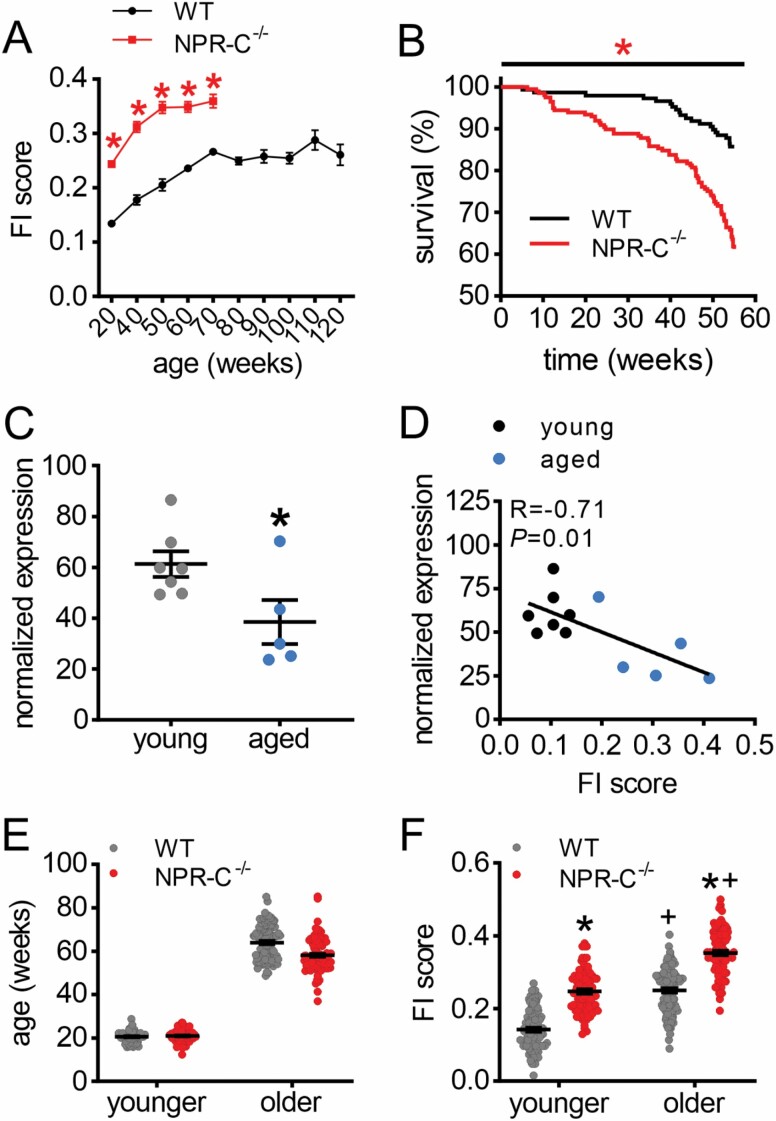Figure 1.
Loss of NPR-C increases frailty and impairs survival in aging mice. (A) Changes in frailty index (FI) score in aging WT and NPR-C−/− mice. *p < .05 versus WT by 2-way repeated-measures analysis of variance (ANOVA). (B) 1-year survival curve for WT (n = 126) and NPR-C−/− (n = 122) mice. *p < .05 versus WT by log-rank test. (C) mRNA expression of npr3 (NPR-C) in young (10–12 weeks; n = 7) and aged (87–117 weeks; n = 5) WT mice. *p < .05 versus young by Student’s t-test. (D) Expression of npr3 as a function of FI score (same mice as panel C). (E) Ages of younger and older WT and NPR-C−/− mice that were used to evaluate sinoatrial node function in this study. (F) FI scores in younger and older WT and NPR-C−/− mice (same mice as panel E); *p < .05 versus WT, +p < .05 versus younger by 2-way ANOVA with a Tukey post hoc test. For panels E and F, n = 97 mice for WT younger, 104 for WT older, 82 for NPR-C−/− younger, and 100 for NPR-C−/− older. NPR-C = natriuretic peptide receptor C.

